Talent
Eight Tips for Enriching Millennial Onboarding

Photo by Eliott Reyna on Unsplash
Millennials are now the largest generation in the workforce, and they have unique characteristics that set them apart from previous generations. As a result, onboarding Millennials in your multifamily organization requires a different approach than what has been used in the past.
Here are eight tips:
- Provide a clear understanding of the company culture
Millennials value a positive company culture that aligns with their values. During the onboarding process, it’s important to clearly understand the company’s culture, including its mission, values, and vision.
- Emphasize the company’s purpose and impact
Millennials are looking for a sense of purpose and meaning in their work. Emphasize the company’s purpose and how it makes a difference. This will help to engage and motivate Millennials.
- Provide continuous feedback and support
Millennials value ongoing feedback and support. During onboarding, it’s important to provide feedback on their progress and offer support to help them succeed. Toss out your annual review, as this generation expects constant feedback.
- Offer opportunities for growth and development
Millennials want to continue to learn and grow in their careers. Offer opportunities for growth and development, such as training programs, mentorship, and leadership opportunities. This will help to keep Millennials engaged and motivated.
- Use technology to enhance the onboarding process
Millennials are comfortable with technology and expect it to be part of onboarding. Use technology to streamline the process and make it more efficient. This can include online training modules, digital paperwork, and video conferencing.
- Assign a mentor or buddy
Assign a mentor or buddy to each new employee to help them navigate the company culture and processes. This will help build a strong relationship with the employee and give them someone to turn to for support.
- Create a sense of community
Millennials value a sense of community and collaboration in the workplace. Create opportunities for employees to socialize and connect, such as team-building activities, happy hours, and volunteer events.
- Offer a flexible work environment
Millennials value work-life balance and flexibility in their work environment. If reasonable, offer flexible work arrangements, such as remote work or flexible schedules, to accommodate their needs.
Share this:
Understanding the Four C’s of Human Resources

Photo by Tim Marshall on Unsplash
Human resource management is a crucial function in any organization. It involves managing the most important asset of the company – its team members. To manage this asset effectively, it is essential to understand the Four C’s of Human Resources – Compliance, Clarification, Culture, and Connection.
Compliance
Compliance is an essential component of human resources. It refers to the set of rules and regulations that an organization must follow to ensure that it operates within the legal framework. These are the non-negotiables. It includes various activities, such as ensuring that team members know their legal rights, keeping up-to-date with relevant laws and regulations, and ensuring the company complies with all relevant labor laws.
Compliance is critical because it helps to protect the company from legal disputes and financial penalties. It also helps to create a positive working environment where employees feel psychologically safe and valued.
Clarification
Clarification is the process of making sure that team members understand their roles and responsibilities within the organization. This includes clarifying job duties, performance expectations, and career growth opportunities.
Clear communication is essential in the clarification process. It involves setting expectations and goals and ensuring team members have the necessary resources and support to achieve them. Team members who understand their organizational role are more likely to be productive and motivated.
Culture
Culture refers to the shared values, beliefs, and practices that shape the behavior of an organization. It is a crucial component of human resources as it sets the tone for the workplace environment. A positive workplace culture can improve human engagement, motivation, and productivity.
To build a positive workplace culture, organizations should promote diversity and inclusion, encourage collaboration and teamwork, recognize and reward achievements, and promote a healthy work-life balance. This can be achieved through training, policies, and programs that support the organization’s culture.
Connection
Connection refers to the relationship between an organization and its team members. This includes providing people with opportunities for professional development, creating a supportive work environment, and encouraging open communication.
People who feel connected to their organization are likelier to be engaged, motivated, and committed to their work.
Share this:
Hire Slow – Fire Fast: A Story About a Regional Manager

Photo by Chris Liverani on Unsplash
Once upon a time, a prosperous regional property manager believed in the power of speed. She had always been successful in making quick decisions, whether it was hiring new employees or jumping on new opportunities to make her portfolio shine.
One day, the regional manager needed a new property manager for her growing team. Without much thought, she hired the first person who seemed competent enough for the job. However, it soon became clear that the new manager wasn’t a good fit for the company culture and didn’t share the same values. This led to tension and conflict within the team, ultimately impacting the company’s bottom line.
Despite the problems with the new manager, the regional hesitated to let her go. She didn’t want to admit that she had made a mistake and felt that giving the manager more time would solve the problem. However, the team’s morale continued to suffer, and the company’s productivity and revenue declined.
After several months, the regional realized her mistake. She had been so focused on speed that she had overlooked the importance of taking the time to make the right decisions. From that day forward, she committed to hiring more deliberately, taking the time to vet candidates thoroughly and ensure they fit the company culture well.
She also learned the importance of acting quickly when addressing performance issues. She knew that keeping an underperforming employee on the team for too long would hurt the company in the long run. She addressed performance issues early on by having honest conversations, providing clear feedback, and maintaining a positive and productive work environment.
Ultimately, the regional found a balance between speed and deliberation. She learned that sometimes it’s worth taking a little extra time to make the right decision and that addressing performance issues early can save time, money, and morale in the long run. Her team members and portfolio thrived, and she became known as a wise and successful leader who valued both speed and quality.

